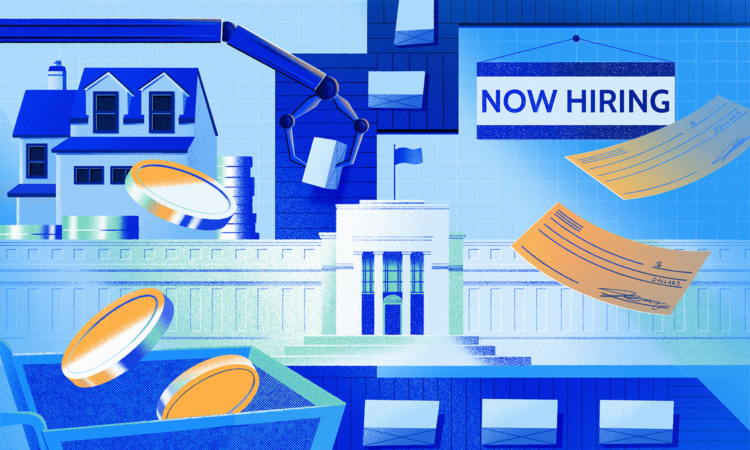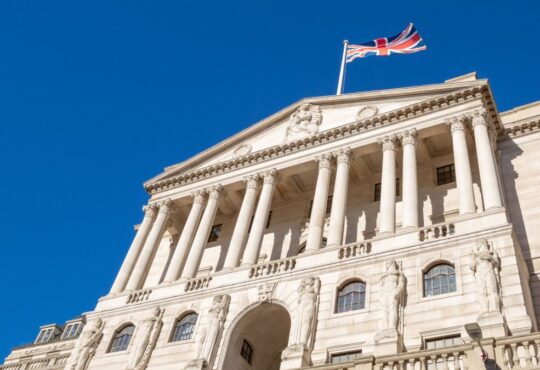
Mortgage Rates Fall For the Third Consecutive Week
June 20, 2024 12:06 PM EDT
There is some possible relief on the horizon for potential homebuyers.
The average rate for a 30-year mortgage offered this week was 6.87% continuing a downward trend that began in early May, according to Freddie Mac. However, that’s still far above the record low of 2.65% reached in 2021.
Mortgage rates are influenced by the fed funds rate, which the Federal Reserve has kept at a 23-year high in order to drive up borrowing costs, reduce borrowing and spending in the economy, and keep inflation in check.
Inflation has been more tame in the past few months and that has made financial markets hopeful the Fed might cut its key interest rate later in the year, potentially providing some relief on mortgage rates.
“A rate around 6% could strongly motivate many sellers to list their homes, thereby increasing overall inventory and exert downward pressure on housing prices,” said Realtor.com Economist, Jiayi Xu.
Should the Federal Reserve Pay Attention to Increases in Unemployment Claims?
June 20, 2024 10:28 AM EDT
Initial claims for unemployment insurance may be starting to show cracks in the labor market.
The volatile weekly measure fell this week to 238,000, according to data released today from the Department of Labor. However, that pushed the more stable measure of the four-week moving average up to 232,750. That number, which economists often cite as a better measure of the labor market, has fairly steadily rose since the end of April.
The Federal Reserve’s fight against inflation has finally begun to take its toll on all aspects of the economy and has resulted in a softening of the labor market. Central bankers had previously said the job market was overheated and that they were looking for more balance.
However, Fed officials are walking a fine line, trying to find balance without tipping the labor market too far and causing a recession.
“Initial claims suggest that the gain in nonfarm employment in May won’t be duplicated in June. The risks to the labor market should be garnering attention from the Federal Reserve,” wrote Ryan Sweet, chief U.S. economist at Oxford Economics. “The central bank can’t wait [to cut interest rates] until cracks in the labor market form or they’re behind the curve.”
High Mortgage Rates Held Back Homebuilding In May
June 20, 2024 09:27 AM EDT
If the U.S. is to build its way out of the current housing shortage, it needs homebuilding to take off like a rocket. Instead, in May at least, it fizzled on the launchpad.
The pace of homebuilding slowed in May to a seasonally-adjusted annual rate of 1.28 million per year, the Census Bureau said Thursday, down from 1.35 million in April and well below the expectations of forecasters for 1.38 million according to a survey of economists from Dow Jones Newswires and The Wall Street Journal. It was the slowest pace of new home construction since June 2020.
Building permits, an indicator of future groundbreaking, were also down, falling to an annual rate of 1.39 million from 1.44 million in April, and missing the median forecast for 1.45 million.
There’s no lack of people who need new homes. High demand for housing, driven partly by a worsening housing shortage, has pushed home prices to record highs. But those high prices, combined with high mortgage rates have pushed monthly mortgage payments out of reach of many would-be buyers.
As a result, leaders in the homebuilding industry have become pessimistic that customers can afford what they build. The June edition of the National Association of Home Builders/Wells Fargo Housing Market Index, which measures how builders assess business conditions, fell to its lowest since December, the association said Wednesday. At a rating of 43, the indicator stayed below the significant “50” mark which indicates more builders believe the outlook is good rather than bad.
“Persistently high mortgage rates are keeping many prospective buyers on the sidelines,” said NAHB Chairman Carl Harris, a custom home builder from Wichita, Kansas, in a press release by the association.
The average rate for a 30-year mortgage offered last week was 6.95%, down from its recent peak of 7.79% in October, but far above the record low of 2.65% reached in 2021, according to Freddie Mac. Mortgage rates are influenced by the fed funds rate, which the Federal Reserve has kept at a 23-year high in order to drive up borrowing costs, reduce borrowing and spending in the economy, and keep inflation in check.
Financial markets are hopeful that with inflation having tamed in the past few months, the Fed might cut its key interest rate later in the year, potentially providing some relief on mortgage rates.






